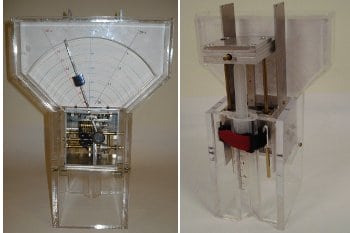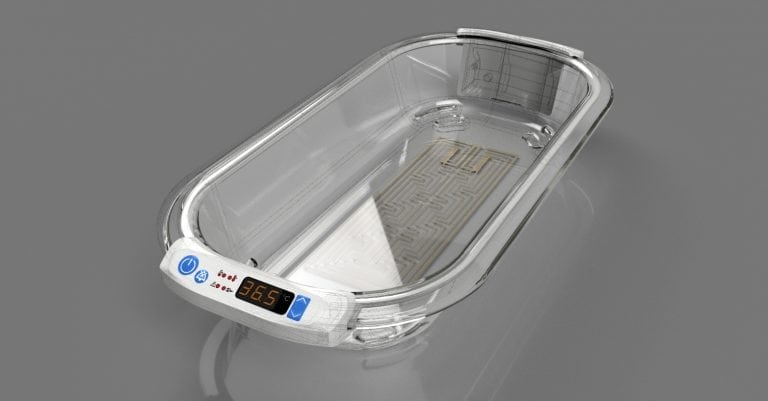
This syringe pump prototype is entirely mechanical and can work in healthcare centers where power may be unreliable. Photo courtesty of Team Zikomo
Medical devices swept the show at this year’s Innovation Showcase, the annual design competition by the American Society of Mechanical Engineers. On June 11, collegiate teams converged on Dallas, Tex. to pit their inventions against one another for a chance at seed money to help take their prototypes to market. Three inventions with the potential to improve healthcare, save lives and lower costs took home the competition’s top prizes of $3000, $5000 and $10,000.
This is E4C’s special coverage of the winners. In this article, we present the second-place finisher, NeoSyp, a mechanical syringe pump for neonatal care in developing countries, by students at Rice University in Houston, Tex.
A better syringe pump
In developing countries, syringe pumps may not receive the maintenance, or the electricity, that many of them need, and patients suffer the consequences. Syringe pumps are a kind of infusion pump, the beeping box affixed to the pole in an IV drip, commonplace in Western hospitals. Syringe pumps can be the size of a roll of paper towels. They clasp a row of syringes and slowly squeeze the plungers over time, steadily doling out a programmed dosage into a patient’s IV line.
When they work, as they do in hospitals with reliable electricity and budgets for parts, they can administer drugs in ways that human nurses could not—in consistent, tiny amounts. The result can be more effective than taking pills or injections all at once. In the rest of the world’s healthcare centers power can be intermittent or non-existent. For those, mechanical pumps sidestep the problem.

A rendering of the NeoSyp prototype. Image courtesy of Team Zikomo
NeoSyp for infant care
Students at Rice University are developing NeoSyp, an entirely mechanical pump designed to deliver medication to newborns who require IV drug treatment.
[quote author=”Clare Ouyang, a student member of Team Zikomo”]“NeoSyP would be able to provide infants in the developing world with accurate fluid delivery. It has the potential to improve the early lives of 11 million infants born each year.”[/quote]
Accuracy is an issue with these pumps. Digital pumps, like those in most Western hospitals, can be accurate to within a fraction of a percent. Mechanical pumps, on the other hand, can have an error rate of up to 20%, Ouyang says. NeoSyp’s error rate, however, is 5%.
At $150, it is also cheaper than other pumps, which can cost hundreds of dollars more.
Mass and clockwork
The prototype is composed of two parts, a mass driver and a gear system all encased in acrylic. The mass driver is the gravity-driven rectangular stack of metal in the image shown. It pushes the syringe plunger. The clockwork gears regulate the flow rate. The gear system is housed in aluminum and made of brass and nylon.
What’s next
Zikomo is testing the device with fluids of different viscosities and temperatures, and a second prototype is underway. When they settle on a design, the students say they will market the device in African countries first, then in Asia. Eventually, they plan to apply for approval from the US Food and Drug Administration and market the device in the United States, as well.
